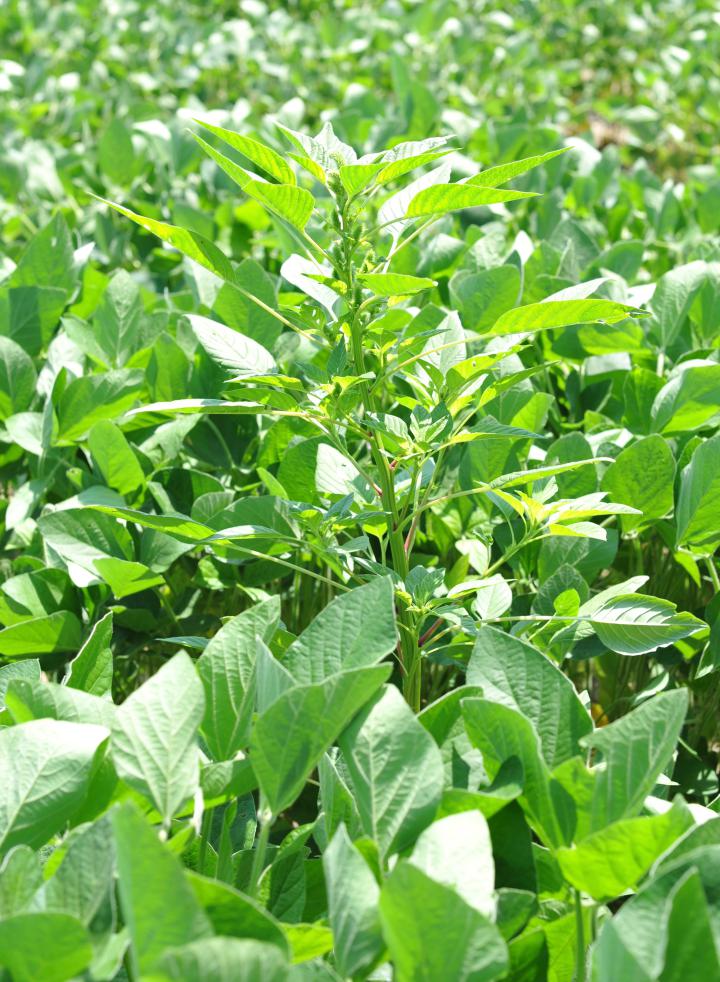Palmer amaranth (Amaranthus palmeri) is an annual plant that thrives in arid environments. As an invasive weed that is known to rob crops of much-needed nutrients, this troublesome plant can also grow tall enough to threaten safety throughout railroad and roadside rights-of-way. As Palmer amaranth continues to spread throughout various regions of the United States, vegetation managers should know where it’s commonly found, what it looks like and how to control it effectively.
Where is Palmer amaranth found?
Native to southwestern regions of the United States, Palmer amaranth plants have migrated to parts of the Midwest and Southeast over the past 50 years.
As a dioecious species, individual plants are either male or female. Regardless of gender, Palmer amaranth can be found throughout cropland and a number of non-crop areas, including railroads and roadside rights-of-way.
In addition to impeding visibility on the rails and roads, this tall-growing weed can compromise the integrity of railway and roadway infrastructure.
How to identify Palmer amaranth
Several characteristics can help vegetation managers distinguish Palmer amaranth from other plant species. White or whitish-green flowering on male and female plants usually clusters in cylindrical inflorescences or spikes up to 60 centimeters in length on the plant’s central stem.
The plant also produces fruit, which separates at the top once mature, exposing black or dark purple seed that measures up to 2 millimeters in diameter.
Female plants can be identified by green and spiny bracts, which are normally located at the base of the petiole and measure up to ¼ inch in length. Comparatively, males are distinguished by their long and drooping flowering structure.
Palmer amaranth stems normally grow up to 3 feet tall, but resistance to repeated chemical treatments has stimulated certain plants to exceed heights of 6 feet.
How can I control Palmer amaranth effectively?
Because Palmer amaranth seed can remain viable for up to three years at 1-inch depths, the establishment of perennial grasses is an effective tactic used to impede the plant’s growth.
To support the development of perennial grasses, vegetation managers can use selective herbicides to target Palmer amaranth and minimize impact on off-target vegetation. As grass grows, it forms a natural barrier against the reestablishment of invasive or incompatible plant species.
Herbicide applicators commonly used glyphosate applications to treat Palmer amaranth in the past. Unfortunately, repetitive treatment methods fueled weed resistance, making glyphosate applications — which are now highly scrutinized publicly — obsolete to vegetation managers. Instead, today’s practitioners are encouraged to incorporate new chemistries and a consistent rotation of herbicide tank mixes featuring unique modes of action to fight weed resistance and control stubborn plant species like Palmer amaranth.
As one of the latest additions to the portfolio of herbicide products offered by Corteva Agriscience, TerraVue® herbicide can be applied at a rate of 2.85 ounces per acre to control Palmer amaranth effectively. To avoid weed resistance, incorporating new chemistries from one preemergence treatment to the next will help enhance the efficacy of herbicide applications.
Learn more about successful herbicide programs and management techniques that support native plant species and the development of beneficial wildlife habitat by visiting HabitatWithHerbicides.com.
™ ® Trademarks of Corteva Agriscience and its affiliated companies. Under normal field conditions, TerraVue® is nonvolatile. TerraVue has no grazing or haying restrictions for any class of livestock, including lactating dairy cows, horses (including lactating mares) and meat animals prior to slaughter. Label precautions apply to forage treated with TerraVue and to manure and urine from animals that have consumed treated forage. Consult the label for full details. TerraVue is not registered for sale or use in all states. Contact your state pesticide regulatory agency to determine if a product is registered for sale or use in your state. Always read and follow label directions. © 2021 Corteva.



